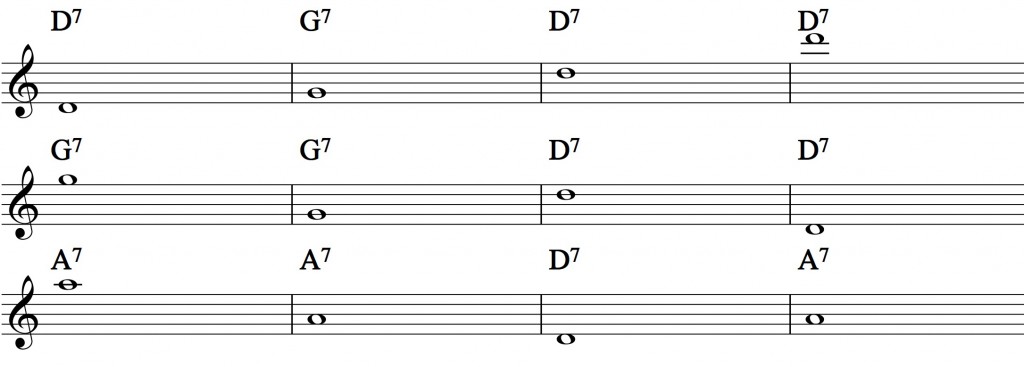This video is intended for the beginning improviser. I talk about the blues form and how you can easily apply a pentatonic scale and still outline the basic chord progression.
Ill play the D blues and apply the Dminor pentatonic scale to the blues.

The notes are D F G A C D
To get the scale in your fingers and ears and down to the saxophone you should definitely play the scale over the whole range of the horn. 
From low D to the high F and back to the low D
Keep exercising the scale until you master it on the saxohone but als able to hear and recognize it.
The next exercise is playing the pentatonic scale from every step of the pentatonic scale from the D going 7 notes up and back to the D. Continuing from the F and 7 notes up and back. repeating this from every step of the scale.

If you can play it up you can also play it down:

These exercises trains your fingers but also your ears to hear the scale.
To play the blues you also need the form of the blues. I made a very simple blues scheme to practise on.

I use only the first, fourth and the fifht degree of the blues. First degree D7, fourth G7 and fifth degree A7.
The first chord is a D7 chord, then follows a G7, then two times D7.
In the 5th and 6th bar you find two times a G7 chord and there after in the 7th and 8th bar we have again two times D7.
The 9th and 10th bar we have the A7, in the 11th bar we have the D7 and ending in the 12th bar with a A7.
You can practise the form by only using the roots of the chords. Play the roots for four beats each follying the progression of the form

When you have gotten used to the roots of the chords playing them without music you should try applying music, pick a simple playalong track of the blues.

play this a couple of times so you get used to the sound of the music.
You can of course change the ocatve of the root. Try to improvise with what octave you play the root in.
I play the following round written down and there after I improvise two rounds woth playing the roots in different octaves.

With this exercise i can explore the different sounds of the roots in different octaves and i can learn the how the chords of the blues move. Play these exercises intensly to learn this by heart, when you improvise you do not have time to check papers, the music has to come directly from your ear and be channeled directly to your saxophone.
When this is learned you can start applying different rhythms to the root notes of the blues.
Start change the rhythm and fool around with the different possiblities of rhythm in the bar, still playing only the root.
I made a little exercise of this. I have written out one chorus of blues and thereafter i will continue to improvise for two more choruses.

I continue for two more rounds:

i only use 8th notes in this exercise because i want to have that nice swing feel which is one of the most important factors in jazz. more advanced rhythmic patterns like triplets and 16th notes figures can be applied later. Now its time for the basics of the blues.
Listen to count basis, duke ellington, sammy nestico bigband music to get this feeling.
I hope you can use the notes,
Enjoy and have fun playing 🙂
If you want to stay up-to-date with my videos:
subscribe to my newsletter (top left of my website)
and/or
subscribe to my youtube-channel.
You can also find me on twitter, instagram and facebook as sorenballegaard

